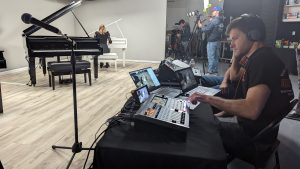- The key to livestreaming is showing the best angles to tell your story in the ideal manner. Multiple cameras help make this possible.
- Laying out a broadcast makes certain that the main action is always covered.
- Communication between operators is an important element of building a bigger broadcast.
- Choosing the correct angles and how to capture them is essential to crafting compelling content for audiences.
Getting started with livestreaming is a challenge. There are so many variables. Perhaps you’re just getting interested in livestreaming. Or maybe you’ve been doing it long enough to gain a following and some momentum. Either way, livestreams likely pop up in your suggestions on YouTube and on your social media. With that in mind, you want to create something compelling and engaging while learning the ins and outs of the process. The Roland Pro A/V line of streaming switchers has an answer for you.
Best Angle for the Story
My background has been in news and sports production. While those fields have opposite workflows, the concepts of what to give the audience are the same. Show the best angle to tell your story in the ideal manner. To do so means having the right cameras in the right place to cover your production.
A fixed camera remains in a single position and will not move during a broadcast, while a manned camera has an operator that will move the camera to follow the action.
Fixed or Manned Cameras
We can debate camera coverage for hours. The biggest area of discussion is whether one should use fixed or manned cameras and if so, how many and where. A fixed camera is what it sounds like: a camera that remains in a fixed position and will not move during a broadcast.
These are great for studio broadcasts or podcasts as most of the time, the elements featured aren’t moving. A podcast host for the most part is going to sit in a seat through the duration of the event. A manned camera has an operator that will move the camera to follow the action. These are most often used in sports applications as the focus of the action is always moving.
Laying Out a Broadcast
There are hundreds of ways to lay out a broadcast for the studio or the field. My philosophy is to set up to make certain that the main action is always covered. In the studio, that would be a two-shot of anchors at the desk. Sports typically require a high camera near the mid-field area. For field sports, softball, and baseball that is the pitcher and batter.
There are hundreds of ways to lay out a broadcast for the studio or field. Set up to make certain that the main action is always covered.
Additional Angles
Beyond that, it’s all about how many cameras and people you have. For most sports, one more camera in the high-mid position providing a tighter shot is perfect. Baseball and softball benefit from a camera focused on first base, as that’s the secondary place of action.
Beyond those two cameras, anything else added is a bonus. Still, each additional angle adds tremendous new opportunities. For football and basketball, an endzone or baseline camera puts your audience at an angle they can’t reach normally. The closer the camera is to the action the more it immerses your audience.
Communication Tools
Communication is the most important element of building your bigger broadcasts. If you have manned cameras, you must have a way to communicate with those operators. This lets them know where they should focus their attention as well as when their camera is in program.
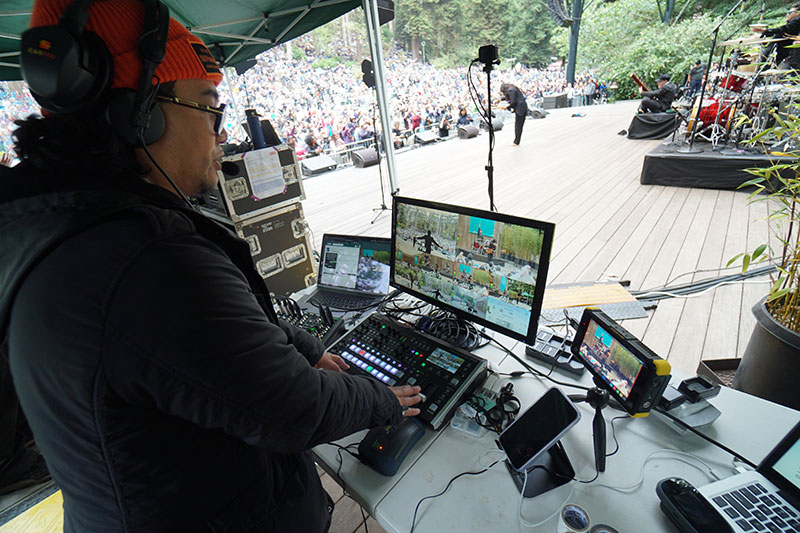
Communication tools range from dedicated hardware specific to professional video communication through mobile apps.
Use Case: Podcast
Outside of sports, you want to make certain that everyone is audible and viewable on camera. For example, if you have a podcast in which three people are speaking and your audience can’t see one of them, it gets confusing. Typically, a podcast will have a wide shot that covers everyone that is going to be on the broadcast. Plus, there is at least one additional camera that can cover each person with a tight shot.
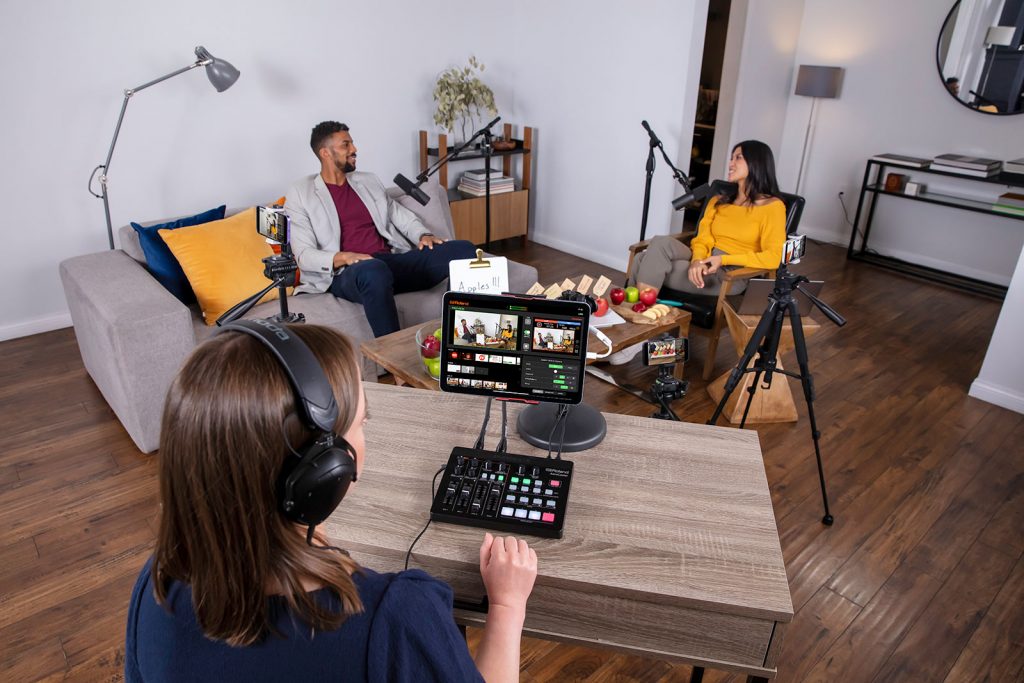
If you don’t have someone to man a camera, then a camera for each person is ideal. This is a great place for fixed cameras. The cameras are set up before the broadcast begins. Then the cameras get switched between the different speakers as the show happens.
Use Case: Music and Demonstration
Music performances and demonstration shows, like cooking or building, require the basic angles of a wide shot to show all the action. They also need tighter angles that further immerse the audience into the action.
For a concert, a mobile camera allowing the audience to feel close to the performers is a great addition. Manned cameras are essential for music performances. However, a show with fixed cameras mixed in also works. For example, a drummer or keyboard player isn’t going to move much. As a result, a fixed camera showing the performer or the instrument adds great visual value.
For a concert, a mobile camera allowing the audience to feel close to the performers is a great addition.
Production Plan
Once you have your cameras plotted and deployed, you have the task of deciding which angle is the right angle. For a news or demonstration show, it’s quite simple. Create a production plan that covers the script or steps and cameras needed to effectively tell the story. Sports are more difficult to plan because of the spontaneity of the action. I use the analogy of cooking to describe how to choose the right angles and how to set up the switcher.
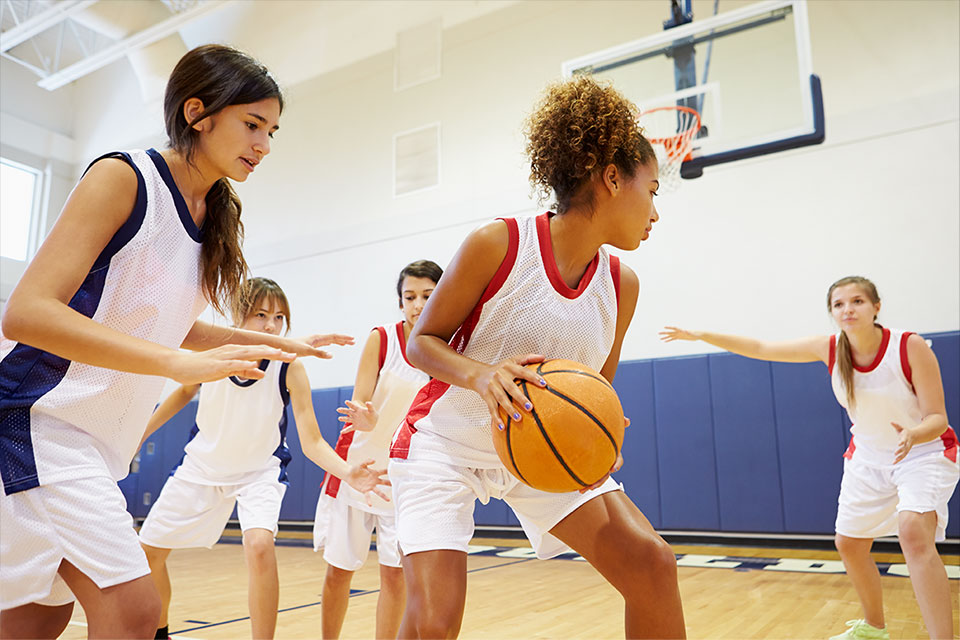
Use Case: Sports Broadcast
When you decide to eat a great dish, you want to taste the food. It’s the same with those that want to watch a broadcast. Viewers are tuning in for a reason, and we must make certain to deliver.
Basketball is a useful example. A basketball broadcast is fundamentally simple. Place one camera as high as possible moving right to left to follow the action. This allows all ten players to appear on camera without too much additional court area. That’s the steak of the broadcast. While steak is tasty on its own, how you season it determines how delicious it is.
The high mid-court tight shot is the seasoning. While you need salt to flavor your dish, you still want to be able to taste it. So, don’t add too much. That angle can be input two on the switcher.
Viewers are tuning in for a reason and we must make certain to deliver.
Adding Flavor
Then I explain that salt isn’t enough to get that great flavor that most people look for, so there needs to be a touch of something else. I prefer garlic. A good third angle for basketball is typically a slash or floor angle. The slash allows you to cover the game from a different angle as well as pick up some shots of the benches and coaches. These angles work well as rejoins and for reactions. You don’t want to have a ton of them because then you miss the action on the court.
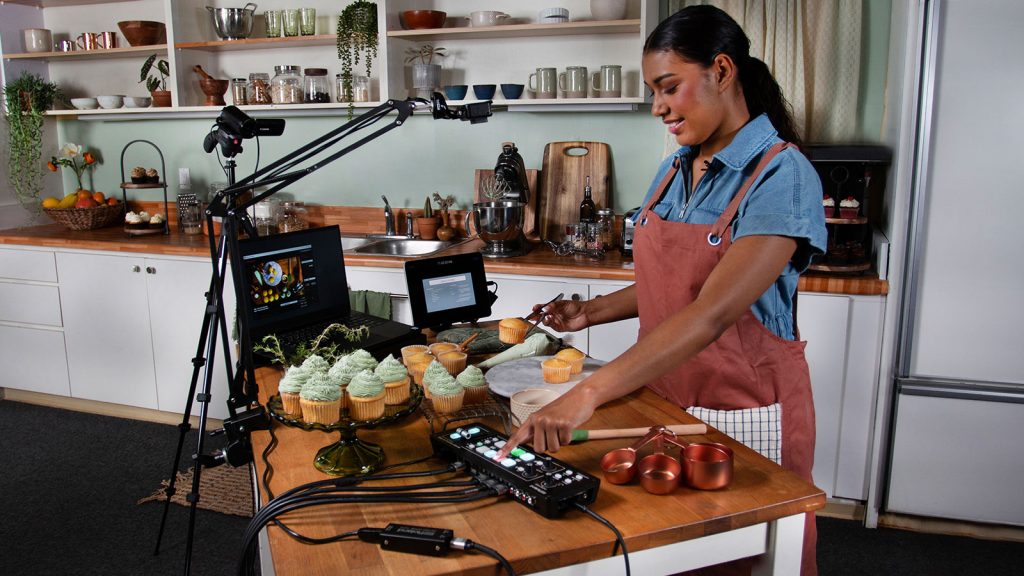
Finishing Touches
Finally, the finishing touch is an endzone angle. If you can do one, make it mobile and focus on the primary team you want to cover. But if you can have two endzone cameras, go for it. In the cooking analogy, this is the butter to finish the dish. You want enough that it intrigues the taste buds but doesn’t dominate. The same goes for this angle. It’s not one you want to use during the full-speed action. Still, it’s effective for an emotional moment or a pause in the action. A closer angle that better shows the faces of the athletes is ideal.
Having an effective plan and visualizing the shots you want allows you to build a strong broadcast. Great content engages viewers and drives up the number of viewers and the amount of time they watch.
Having an effective plan and visualizing the shots you want allows you to build a strong broadcast. Great content engages viewers and drives up the number of viewers and the amount of time they watch. The cooking analogy will help you come up with a plan to cover a show, lay out a switcher, and train your crew to understand your philosophy for switching a game.
Roland AeroCaster
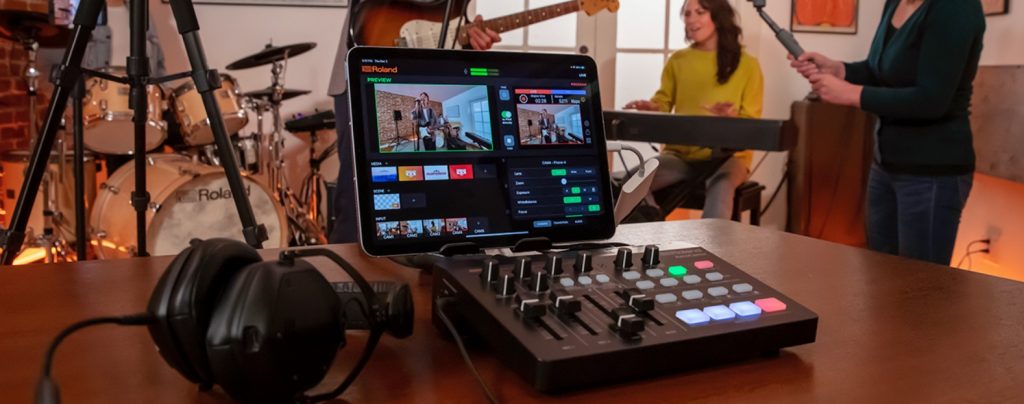
The Roland AeroCaster system makes livestreaming easy using devices you already own to create dynamic productions. With just an iPad and a few mobile phones, the Roland AeroCaster system will have you wirelessly switching and streaming on your favorite platform in minutes. To find out how easy livestreaming can be, sign up for our Roland AeroCaster email series below.




